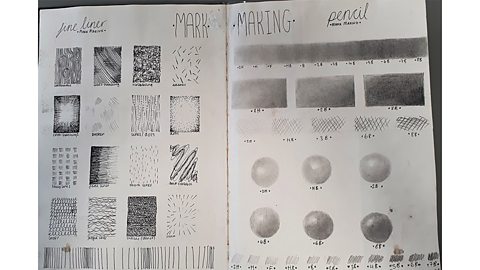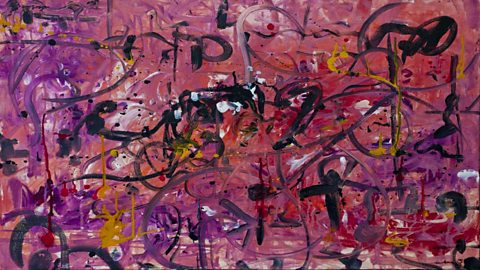Mark making techniques
Mark making describes the way artists produce different lines, dots, marks, patterns and textures. Mark making can be creative and experimental - it can be done with any materials and tools.

Different types of mark making techniques include:
- hatchingA drawing technique where shade or tone are created using closely-spaced lines
- cross-hatchingA drawing technique where shade or tone are created using crossing lines.
- stipplingDots used instead of lines to build up tone. The size, number and distance between the dots will change the tones created.
- dabbing
- sgraffitoThe technique of scratching a design, pattern or picture into something such as pottery, plaster or paint.
- pouring
- splattering
- scribbling
Click through the slideshow to see examples of different mark making techniques:

Image caption, An example of pen hatching
Image caption, An example of stippling with pen
Image caption, An example of sgraffito - scratching into wet paint
Image caption, An example of pouring- mixed with water to create drip effects
Image caption, An example of a pen drawing using scribbles
1 of 5

Jackson Pollock created ÔÇÿaction paintingsÔÇÖ by throwing paint at his canvas. This is abstract and Pollock was more interested in the action of creating art than the outcome. His paintings reflect different moods such as anger or happiness.
Similarly, Lubna Speitan's abstract art displays emotion through colour, shape and tone.
Mark making has no rules - it can be loose and expressive or controlled and neat. The results depend on your choice of media, tools and techniques.
Found objects can be used to create textures - for example a toothbrush, twig or cocktail stick dipped in ink or paint. This will give different results to work made using pencils and biros.